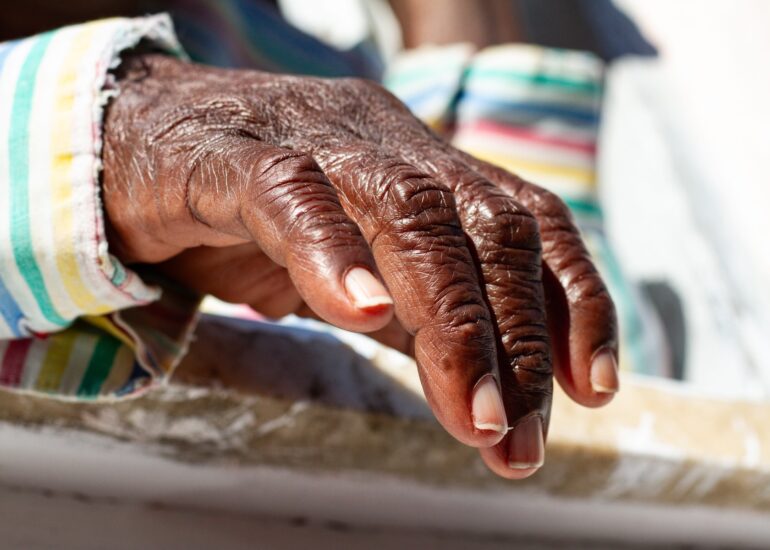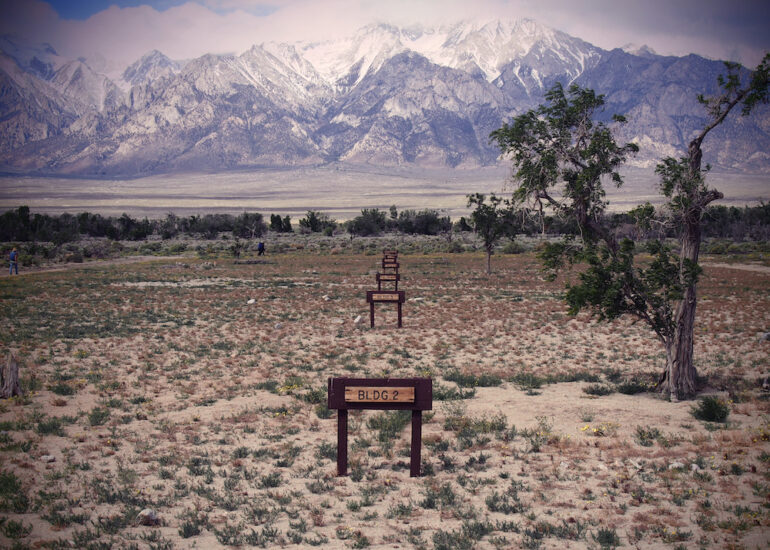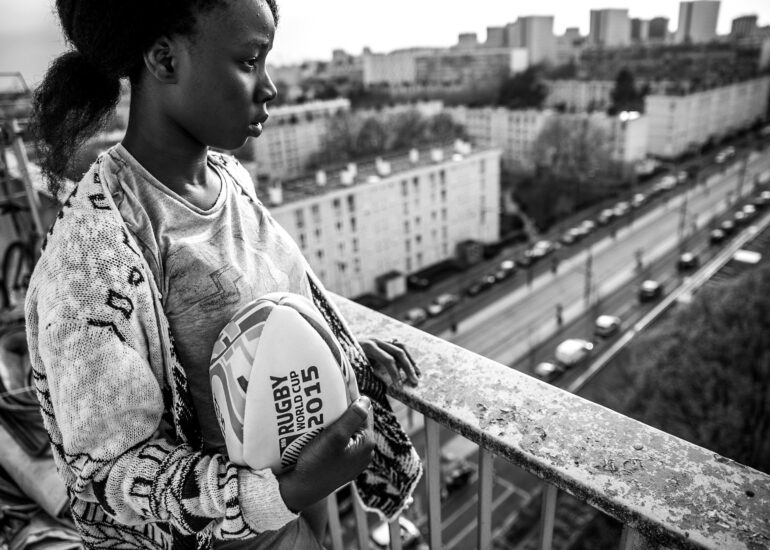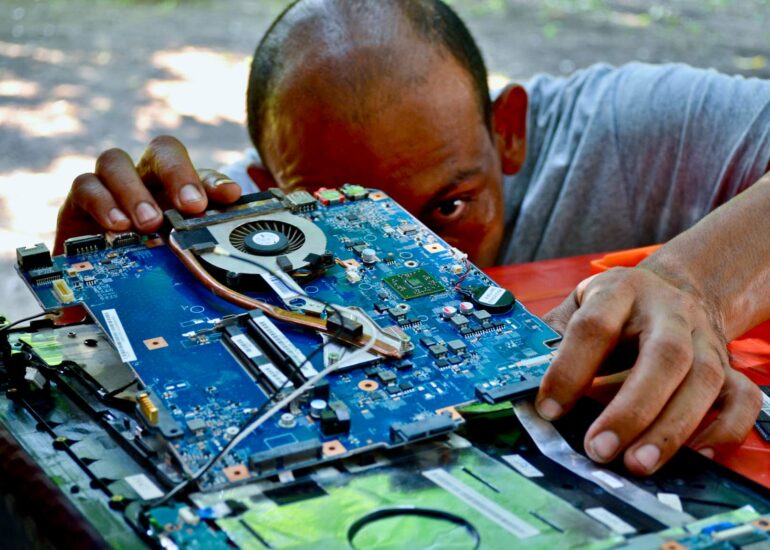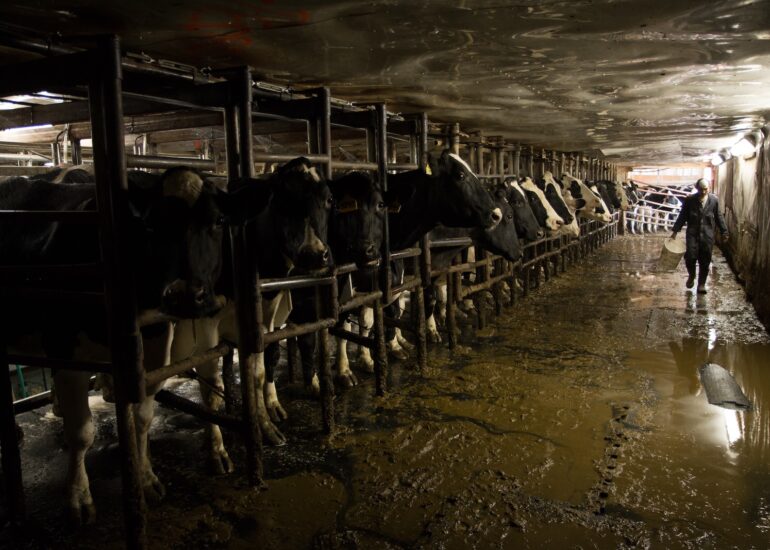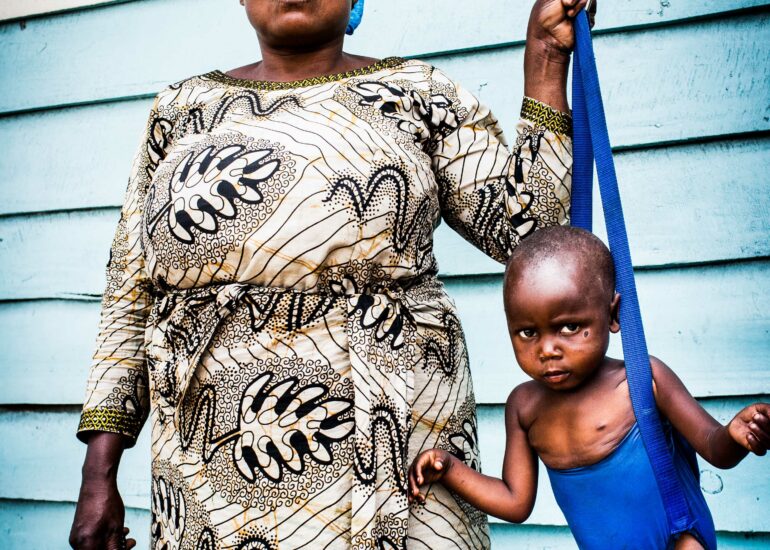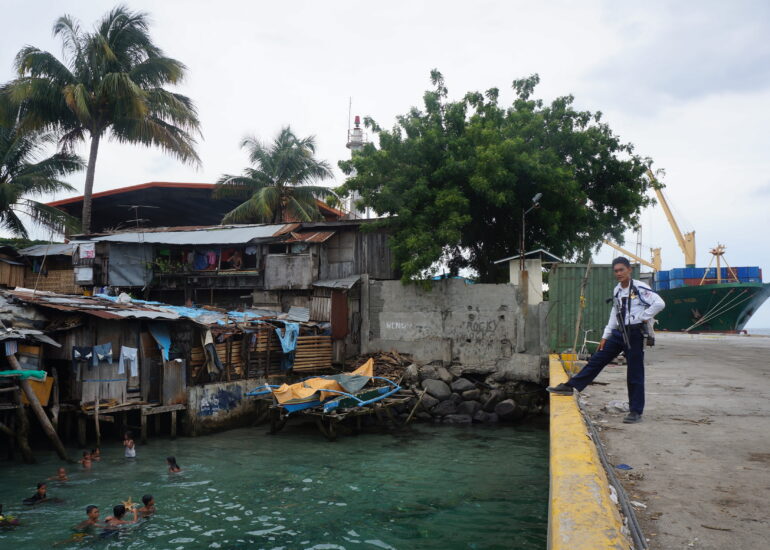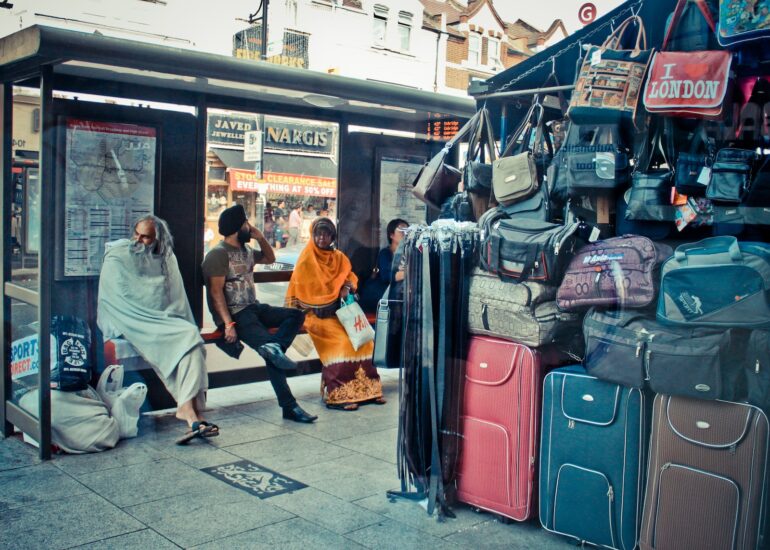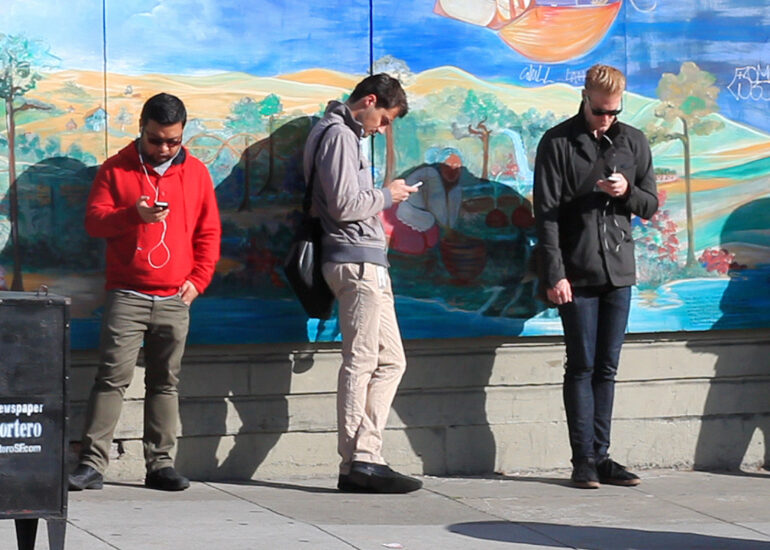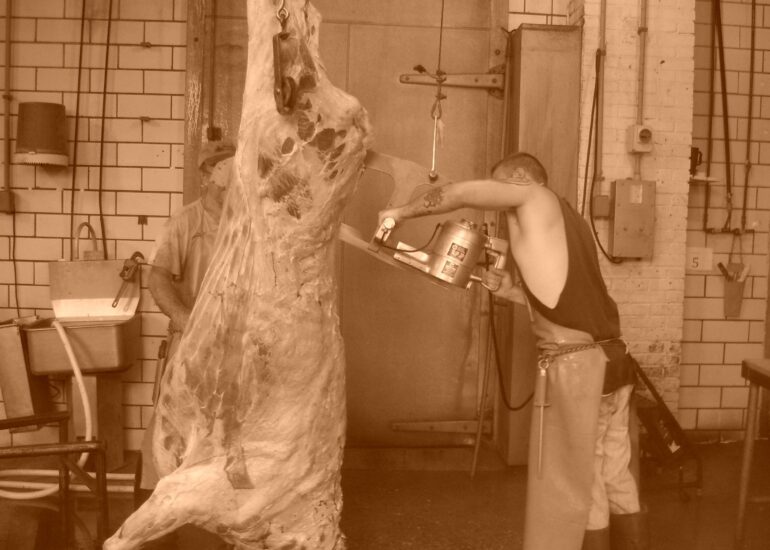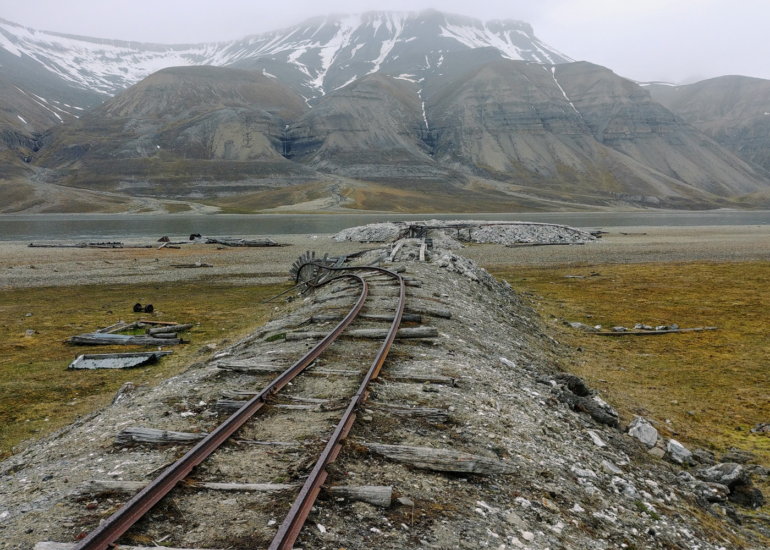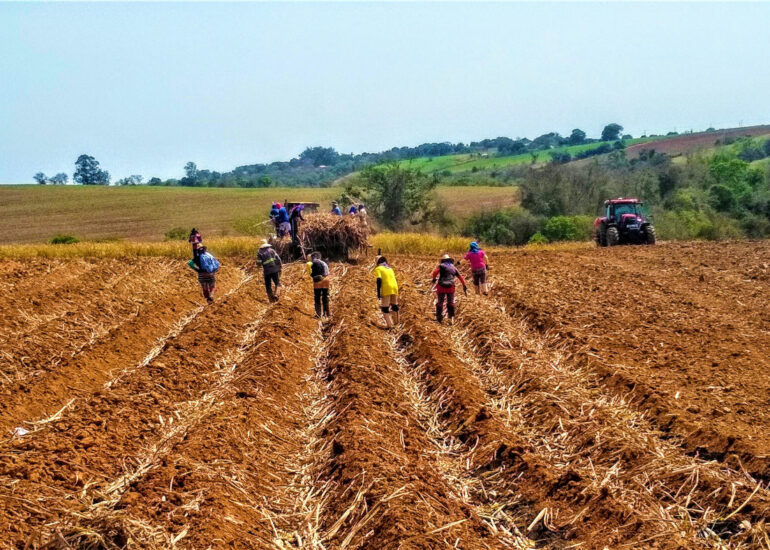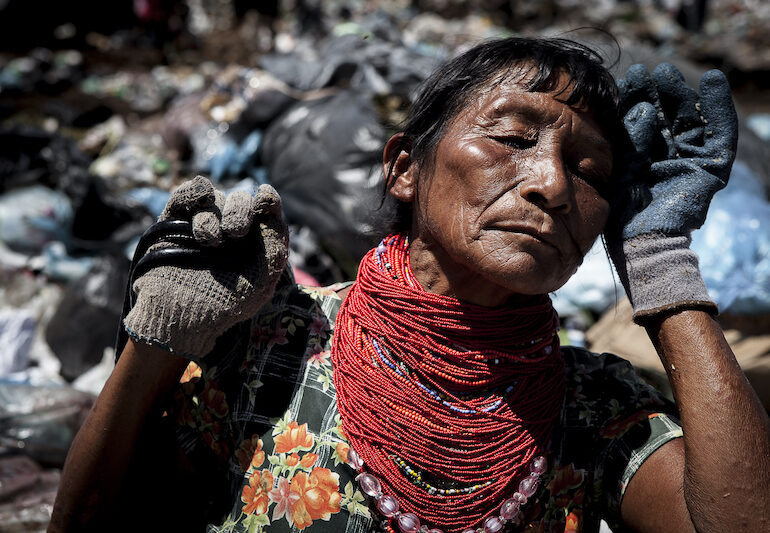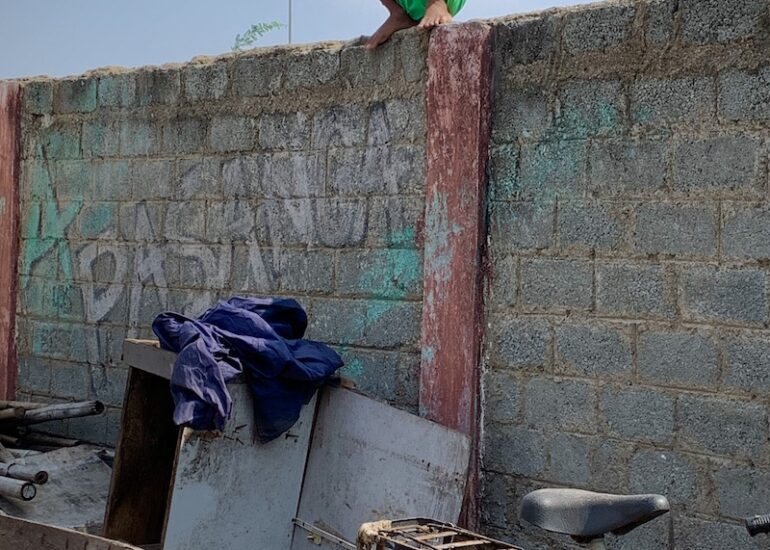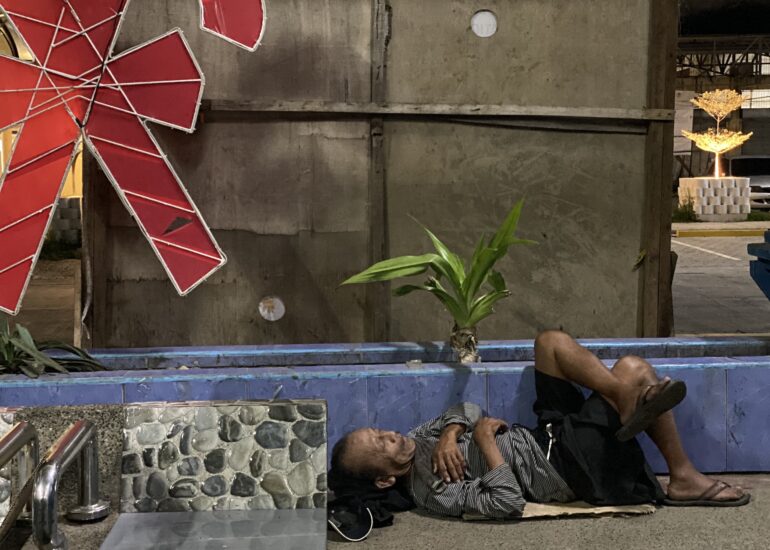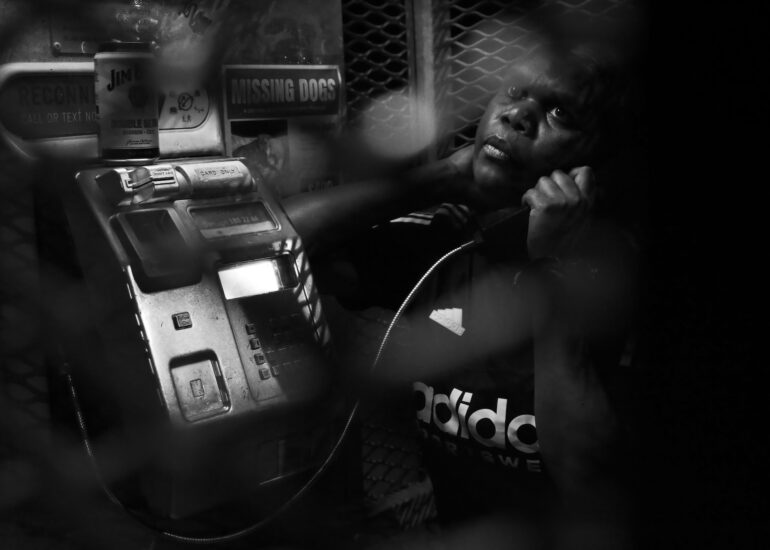Man and Modernization in an Alley (2010 Third Prize Winner)
2010 Third prize winner
Man and Modernization in an Alley
Joan Michele Ryan
Photo Essay

In an alley behind a line of pubs nestled in the heart of the Central Business District of Singapore, a lone man sits. Seated on his plastic red throne amidst the incessant hum of the copious amount of air conditioning units, he retreats from the world into his hour of solitude. Outside, the world goes roaring on by. In his hands, the day’s newspapers.
Indeed, the hard-pressed need to stay ‘relevant’ to the rest of society is evident everywhere, even in the figure of the individual seemingly seeking refuge from the business district only a stone’s throw away. Even in his moment of rest, he is still one with the world outside, connected by the newspapers in his hands. This very man also embodies the neat juxtaposition of the old and the new, with the old accessorizing itself to pass off as contemporary. Here we see the man, not young himself, seated on an old plastic red chair. The old buildings are fitted with modern glass windows while their wooden shutter doors remain. In the background, the looming silhouette of a skyscraper, a corporate giant in its literal sense. And all along the alley, there are a near-ridiculous number of air conditioning units.
Why would a little building need so many units? This very question many viewers might ask belies the ripples of modernisation that have touched the alley. With the rise of modernisation, the ability of one to consume has become an indication of one’s social status. The consumer culture drives the individual to move beyond consumption of basic needs to luxury goods and technological innovations. Not stopping at only being able to consume greatly, many are also compelled to show how greatly one can consume. This conspicuous consumption drives the mass production and in turn mass consumption of many commodities. This way, the cycle feeds itself and continues to grow, making it easy for individuals to allow the consumer culture to trump logic. If only the richer can afford to live in an air-conditioned environment, the installation of more units must display a higher and therefore better social class, even if it might be unnecessary and illogical. Albeit grossly simplified, many can succumb to this line of reasoning the consumer culture provides.
Not only illogical, mass consumption also further aggravates the tension between the economic growth it generates and environmental concerns. Captured in the business district, the air conditioning units along the alley are each attached to an office. And with every small alley like this one, there are many more tall office buildings with even more air conditioning units – it requires little imagination to consider what damage maintaining a cool office environment alone can incur on the environment. This detrimental effect seems inherent in today’s economic system, from the pollution caused by energy production to the clearing of forests for paper and wood.
The formulation of policies like the United Nations Framework Convention on Climate Change are heartening efforts to alleviate the problem. However, the nature of the economy still encourages many to stay within its paradigm, as evident in the alteration of the Kyoto Protocol’s original intentions or even the refusal of some nations to join. Environmental degradation still persists globally. Evidently, governmental policies alone are insufficient at correcting the problem and many of them focus on correcting the system of production. Perhaps then, the solution would be to change the system of consumption rather than production and therein lies the call to action for all of us. Perhaps now would be the time where we look to other concerns other than economical ones and step out of the consumer culture. Instead, we turn our crave for more to environmental and cultural concerns, where the old will no longer feel the need to deny its past to keep up with the new.
Like the man on the bicycle in the photograph, where will we go? Where will our past actions lead us to? Are we on a road that ultimately leads to our own destruction or can we still turn around? While it might remain uncertain, we as actors in our social and economic systems have a stake and a say in what waits for us in the future.
References
Shah, A. (2008, September 03). Consumption and consumerism – global issues. Retrieved from http://www.globalissues.org/issue/235/consumption-and-consumerism
Commentary on Rachel Tanur's Works: Drag Queen 3

In Becoming Salmon (2015), anthropologist Marianne Lien states that the act of slaughtering animals cannot be removed from a web of meanings. An activity that seems, at first, simply mechanic and repetitive is, actually, embedded in a network of relations. For example, feeding farmed Atlantic salmon has become an issue of animal-welfare and state regulations.
In Fish with Hands, Rachel Tanur reminds us that fish exhibited in markets are not merely food. The price tags are an invitation to imagine the social life of fish, or what came before the picture. Where did the fish come from? How were they processed? How were living animals transformed into products?
But Rachel’s picture reminds us of something else. If we shaped the ways fish are produced and consumed, fish can also shape us. The framing of the gloves sitting on the stall captures our gaze as an indicator of the person who is there every day. Rachel knows that the gloves position was not a coincidence. Whoever placed them there was careful enough to arrange a place that did not disrupt the fish, who calls for special forms of manipulation. The interlaced fingers make the pair of gloves stable, for example, so that they would not fall and get dirty. The human body feels what the body of the fish asks for, and the gloves signal to that.
Feminist scholars have been discussing how care has been commodified in different settings to explore people’s labor (Cameron 2000). Along these lines, we could think of the gloves as an indicator of a worker who was somehow induced to be gentle with the fish in order to make the products more enticing to the costumers. At the same time, with the aid of contemporary scholars, we can take a step ahead. Social scientists suggest that care is a powerful doorway to access community making and creation of ties of all kinds, animals included. What if we could find, in the gloves whimsically standing beside the fish, a glimpse of what Anna Tsing (2012) calls the “potential collaborations” to make our planet livable? Can the intimacy between the human and the dead fish tell us something about possibilities of living together with other species on an already damaged earth?
In the past decades, social scientists have invited us instead to think of the social lives of pictures (Pinney 2011), and more recently, a new perspective suggests that images are productive and shape our lives (Strassler 2009). Rachel’s Fish with hands is more than a representation of a fish market, or of labor conditions. For its sensorium qualities (Pink 2005), the photograph can guide us through issues of care, labor, and interspecies relationships. The photograph is not an answer, but it works as a glimpse of what collective life could be like if we reexamined our relationship with the planet through the lenses of commonality, care and attention to other beings.
Recently in Portfolio

